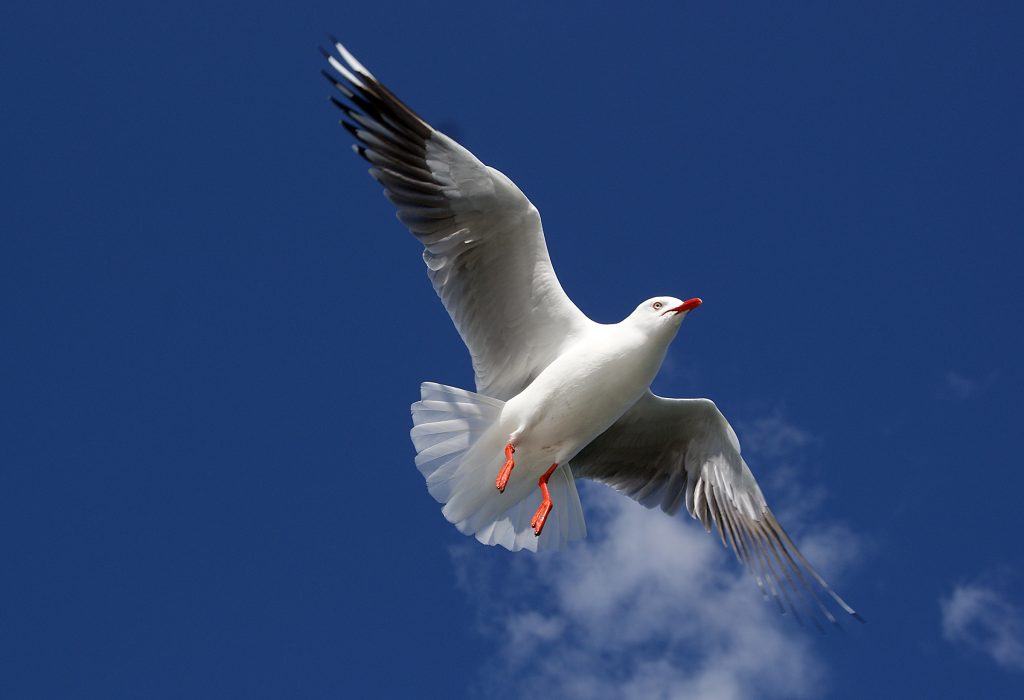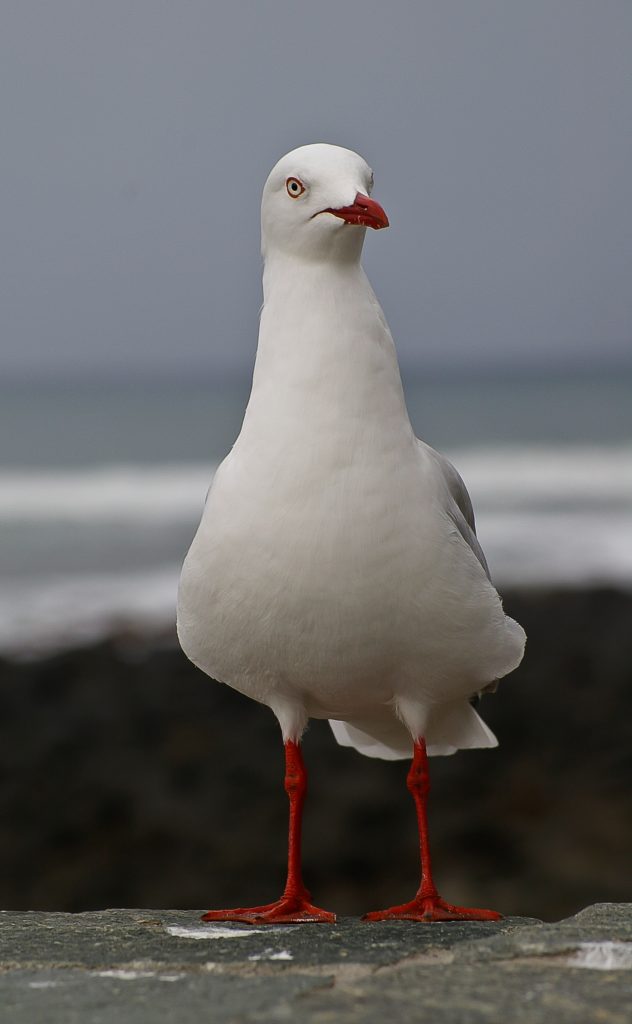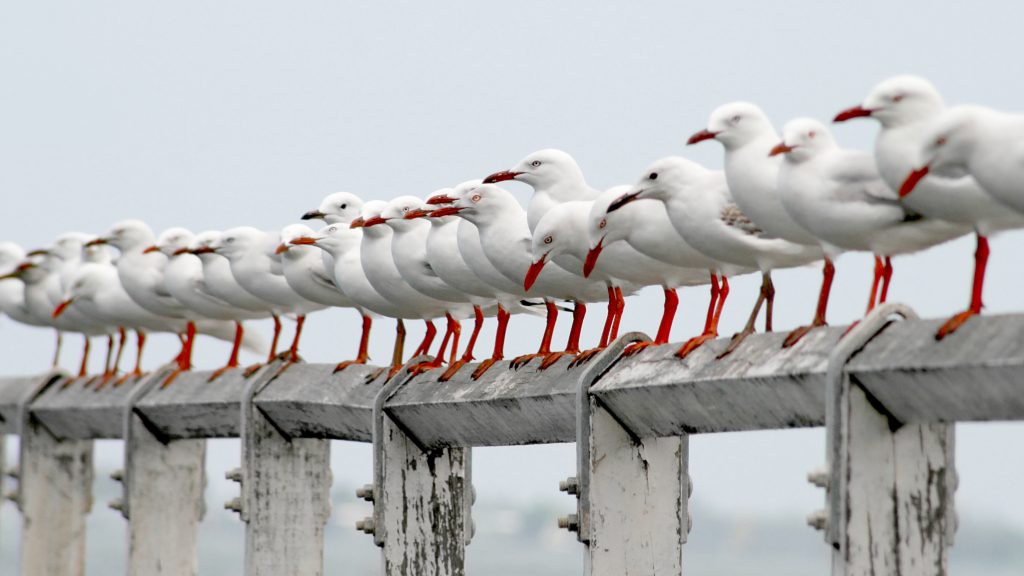Fish and chips on the beach, mobbing silver gulls: it’s the authentic Australian seaside picnic. Adept natural scavengers and especially chip thieves, silver gulls enjoy a flexible diet. And according to a study from the UK’s University of Exeter (2020), humans may be unintentionally directing gulls to food. The study found that silver gulls’ larger European cousins, herring gulls, use human cues when searching for food. ‘After seeing researchers handle one of two identical food items, they preferentially approached the handled food item afterwards.’
The silver gull (Chroicocephalus novaehollandiae), one of three gulls found in Australia (as well as in New Zealand and New Caledonia), is common throughout the country, but especially at, or near coastal areas, where it can be seen in persistent pursuit of food refuse and scraps provided by humans. With the availability of scraps and refuse created by our ‘throwaway society’, the population of silver gulls, which was scattered thinly along the coast 50 years ago, has grown considerably.
Adult birds are between 40-45cm in size, weighing 265-315g. They can be distinguished by their bright red beaks; the stronger the red, the more mature the bird. Silver gulls can breed all year round, but do so mainly from August to November, laying a clutch of 1-3 eggs in nest-scrapes on the ground. Breeding colonies can comprise many thousands of birds: the main NSW colony site, the Five Islands off the coast of Wollongong, for example, is home to an estimated 40-50,000 breeding pairs.
Silver gulls can commute up to 40 km from their roosts to feeding sites, with peak movements at dawn and dusk, as they move between the two sites. Their flight patterns are also affected by low tides, as they move to and from intertidal feeding areas. Pools of water, especially those close to a roosting site or feeding area, attract the gulls, which enjoy bathing in them.
Although classified as a medium-sized bird, silver gulls are a potential aviation hazard because of their flocking behaviour, and often erratic flight, with their flight paths crossing coastal runways. They can find airports highly attractive, with open areas for loafing, pools of water for bathing, and potentially, a ready supply of natural and human food.
According to Australian Transport Safety Bureau (ATSB) data, between 2008-2017 there were 229 strikes involving gulls/seagulls/silver gulls, with over 25 per cent of strikes involving multiple birds, most commonly between two and 10. Of these strikes, five per cent led to aircraft damage. A silver gull strike at Sydney Airport on 1 December, 1969 led the crew of a Pan Am Boeing 707-320 to reject the take-off and a subsequent runway excursion. This accident galvanised proactive Australian coastal airports to focus on silver gull management. Reducing the availability of food, through tighter controls on household and airport waste; improving airfield drainage to minimise bathing and loafing; and mowing to maintain grass at an optimal deterrent height, have made these airport environments less attractive.
Main Image attribution: Toby Hudson-2011_WikiCommons




